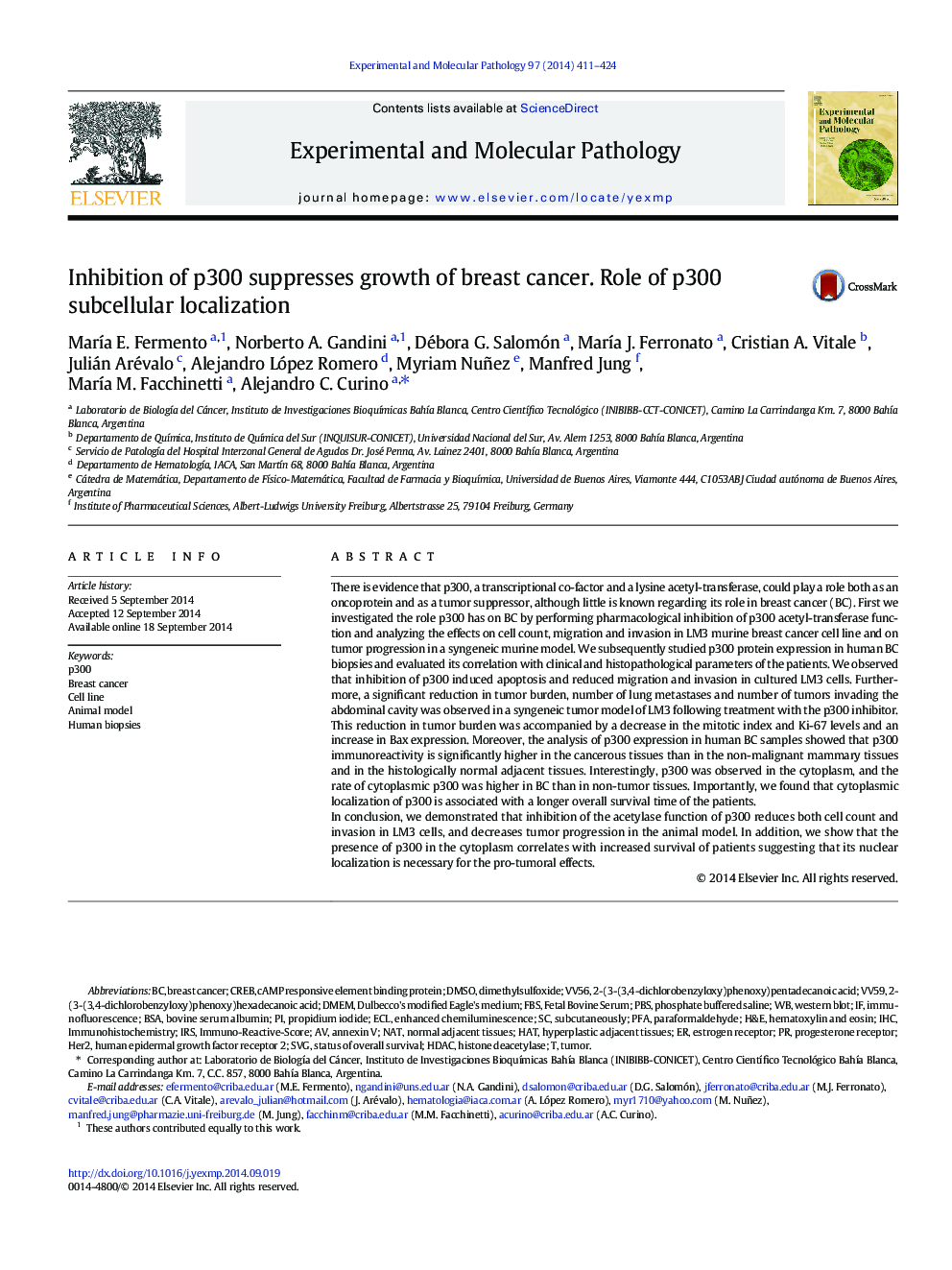| Article ID | Journal | Published Year | Pages | File Type |
|---|---|---|---|---|
| 5888090 | Experimental and Molecular Pathology | 2014 | 14 Pages |
Abstract
In conclusion, we demonstrated that inhibition of the acetylase function of p300 reduces both cell count and invasion in LM3 cells, and decreases tumor progression in the animal model. In addition, we show that the presence of p300 in the cytoplasm correlates with increased survival of patients suggesting that its nuclear localization is necessary for the pro-tumoral effects.
Keywords
CREBHDACNATIRSPFAECLFBSDMEMP300PBSHER2SVGBSADMSOH&EDulbecco's modified Eagle's mediumbovine serum albuminAnnexin VImmunofluorescenceIHCImmunohistochemistryenhanced chemiluminescenceTumorCell lineDimethylsulfoxidesubcutaneouslyBreast cancerfetal bovine serumPhosphate buffered salineAnimal modelHematoxylin and Eosinhistone deacetylaseWestern blotparaformaldehydecAMP responsive element binding proteinPropidium iodideHATEstrogen receptorHuman epidermal growth factor receptor 2Progesterone receptor
Related Topics
Life Sciences
Biochemistry, Genetics and Molecular Biology
Clinical Biochemistry
Authors
MarÃa E. Fermento, Norberto A. Gandini, Débora G. Salomón, MarÃa J. Ferronato, Cristian A. Vitale, Julián Arévalo, Alejandro López Romero, Myriam Nuñez, Manfred Jung, MarÃa M. Facchinetti, Alejandro C. Curino,
